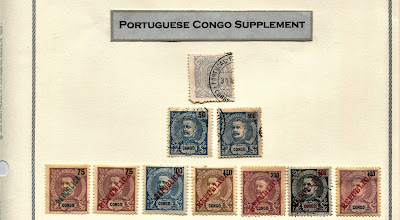The smallest colony of
any European nation on continental Africa, Portuguese Congo’s borders were
defined by European powers at the Berlin Conference (1884) without any consultation
with Africans. It covered an area smaller than Delaware and larger than Rhode
Island.
It was cut off from
Angola, a much larger Portuguese colony, because Belgium insisted on access to
the Atlantic via the Congo River. So, Belgian Congo gained control of a 25-mile
coastline on the river’s north side, making it a strange funnel-shaped county.
Too small for Portugal to manage separate colonial oversight, Portuguese Congo was administered by Angola as an exclave province known as Cabinda beginning in the early 1920s. (The capital city is also named Cabinda.) Then, in 1975 when Angola gained independence from Portugal, it was declared an integral part of Angola; disputes about sovereignty ensued. Shortly thereafter, an internationally unrecognized Cabinda government-in-exile opened in Paris.
From 1894 through 1918, Portuguese Congo used standard inscribed Portuguese colonial stamps, beginning with a two series featuring the likeness of King Carlos. When the monarchy was ousted by a republic, these were overprinted ‘REPUBLICA” (1910). The overprints were produced both in Portugal and locally, the latter being sans serif. In 1911, likely because of a shortage, stamps inscribed “Angola” and overprinted “Congo” were used. A change of currency in 1913, from Reis to Escudos, resulted in stamps being issued with new values, as shown in the Ceres and Vasco da Gama series. After 1920, Angolan stamps were used.
I wonder what
Portuguese Congo used for postage due, there being no due stamps listed by
Scott. Other Portuguese colonies had postage due stamps in perfusion.
Census: 35 in BB spaces, 36 in supplement pages.
Stamp production for Portuguese Congo continued until 1918, when the stamps of Angola were then used.
Although the enclave is still part of Angola today, because of the reality of being physically separated from Angola proper, as well as the distinct history, the Enclave of Cabinda has had a number of recent separatist movements.











No comments:
Post a Comment